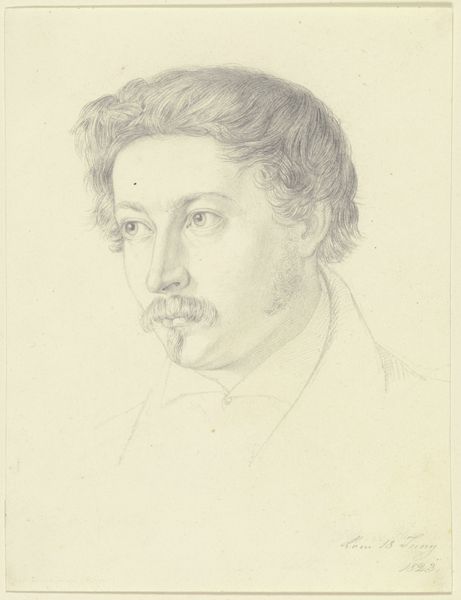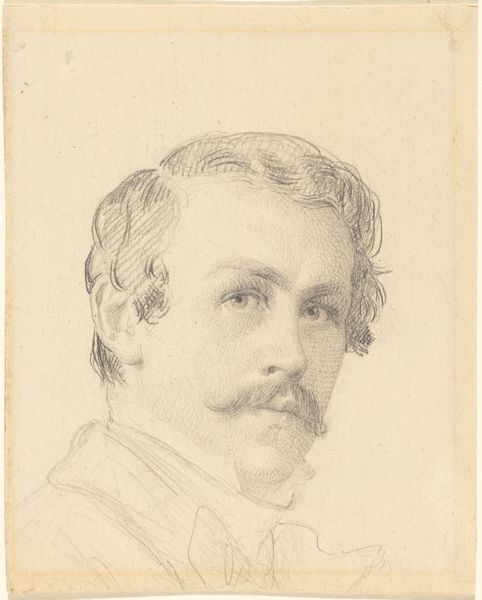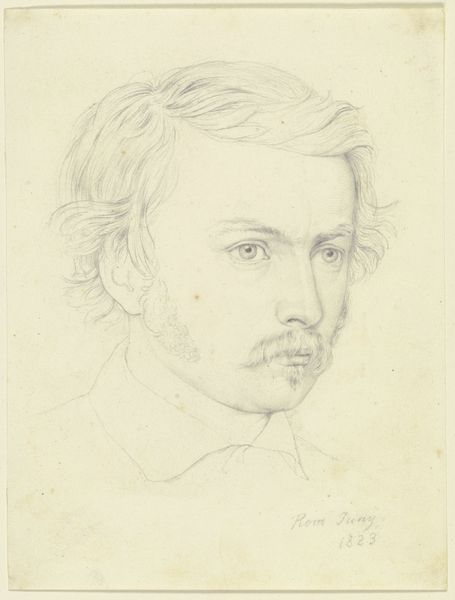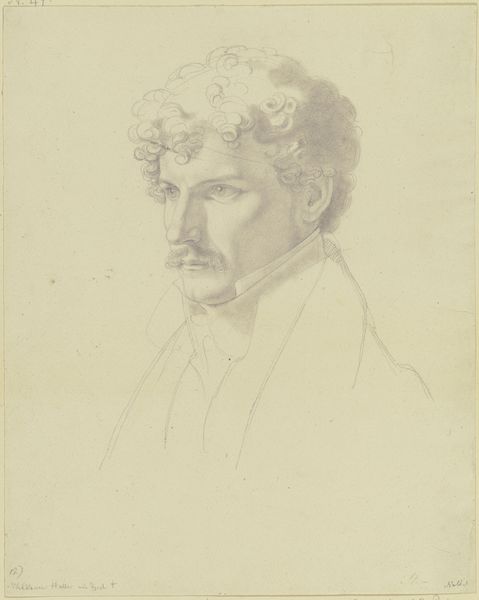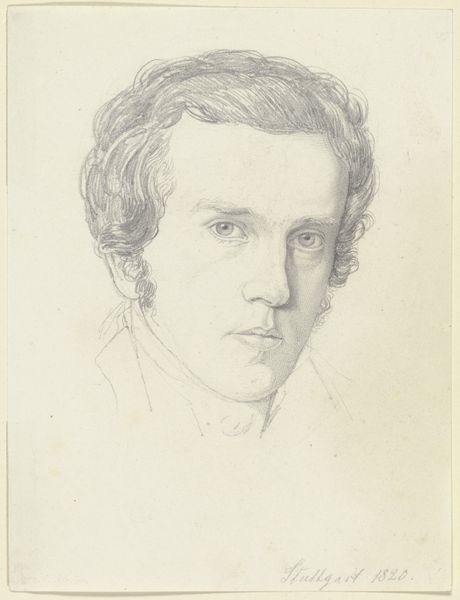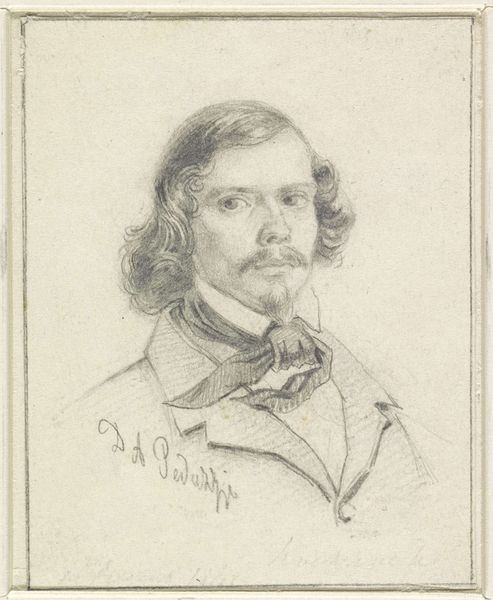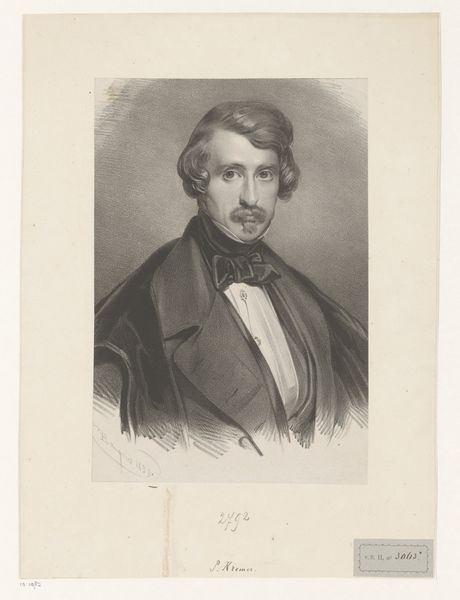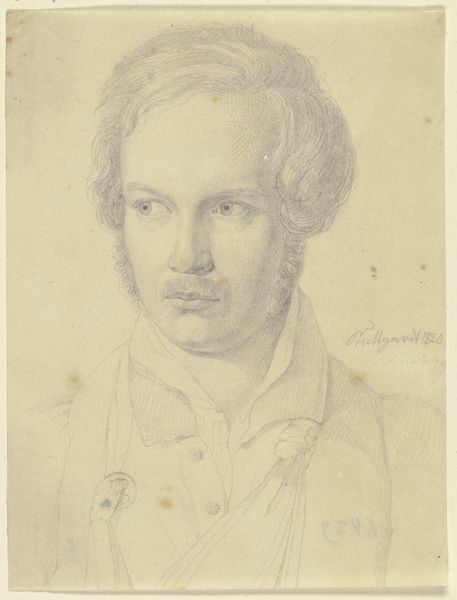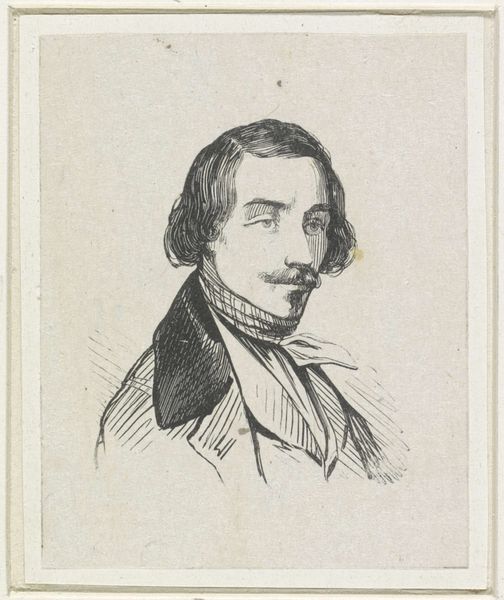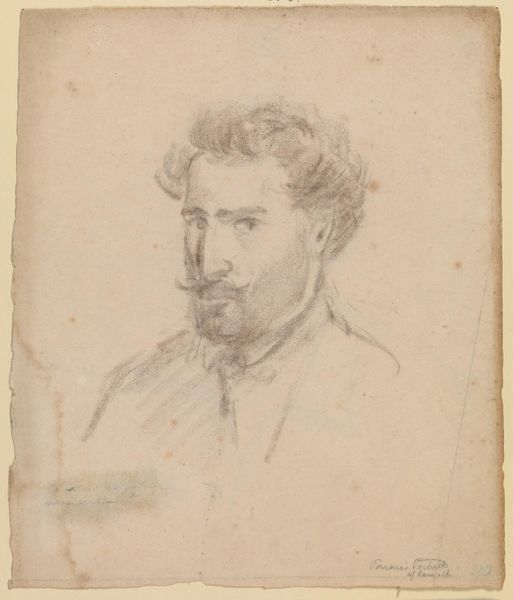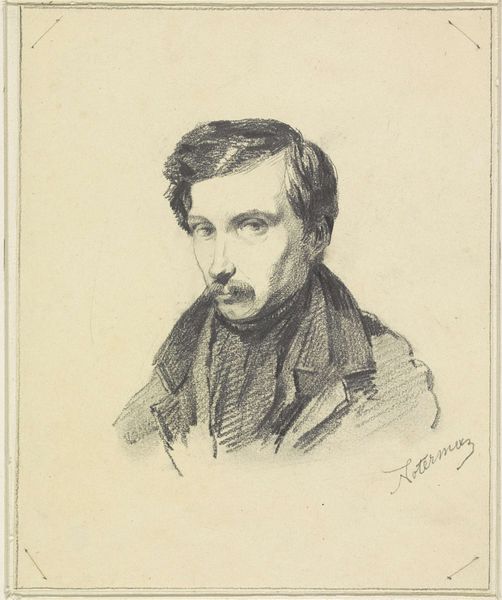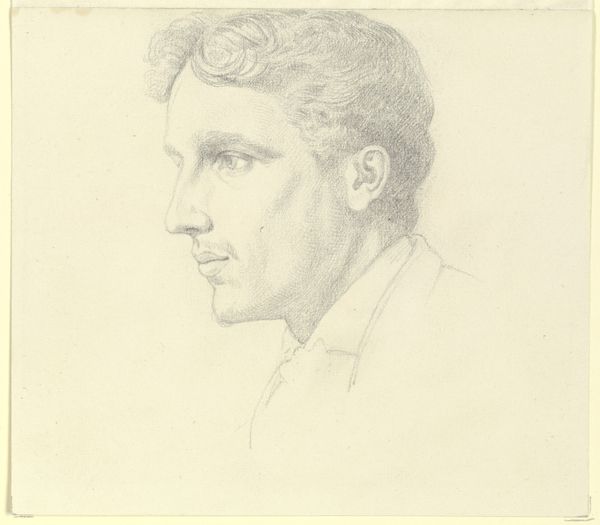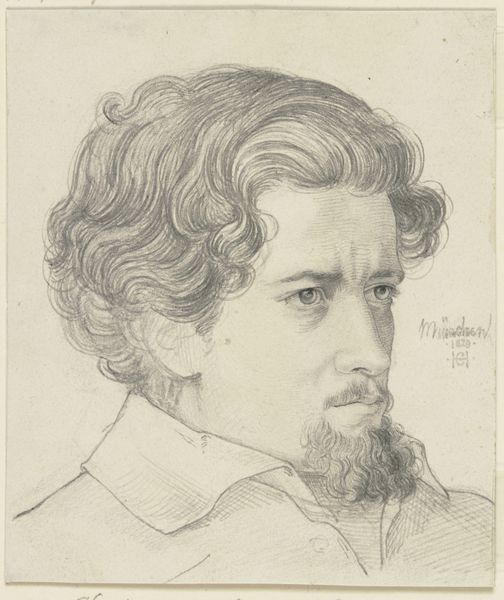
Copyright: Public Domain
Curator: Here we have a portrait by Nikolaus Hoff. It's entitled "Bildnis des Frankfurter Landschaftsmalers Johannes Thomas," created around 1824. You'll notice it's rendered in graphite, or pencil, on paper. Editor: My first thought is delicate. Almost haunting, the way the lines seem to barely exist. It's a beautiful study in light and shadow, even if it is rather understated. Curator: It's fascinating to think about the artistic relationship here – Hoff capturing the essence of Johannes Thomas, who himself was a painter of landscapes. Consider the texture of the paper, its very substance almost vanishing beneath the artist’s delicate hand. The labor… Editor: Yes, the labor is nearly invisible, and maybe that’s the intention? I see the romantic yearning typical of its era, a quiet appreciation of nature reflected through a man who interpreted it on canvas. I wonder what they talked about as Hoff was sketching. Did Thomas offer advice? Did they debate the value of the perfect sunset? Curator: The subtleties of graphite lend themselves well to that introspective feel. Pencil itself is such a readily available material, isn’t it? But its deceptive simplicity gives this work such a grounded and democratic feel… the cost to make art with humble means like this versus buying ready made oils and canvas at the time. I appreciate that it renders even this portrait almost accessible to anyone. Editor: Indeed! Despite the Romantic tendencies, I appreciate how “raw” it is. One can see the immediacy of the process. It’s so refreshing when art feels almost accidental. Did Hoff make mistakes or was he one and done like capturing a bird in flight? Did they break for wine? You wonder... Curator: So much left unsaid, but visible in the delicate lines… Editor: It reminds us that sometimes the most profound beauty lies in the simplest of forms, doesn't it?
Comments
No comments
Be the first to comment and join the conversation on the ultimate creative platform.
